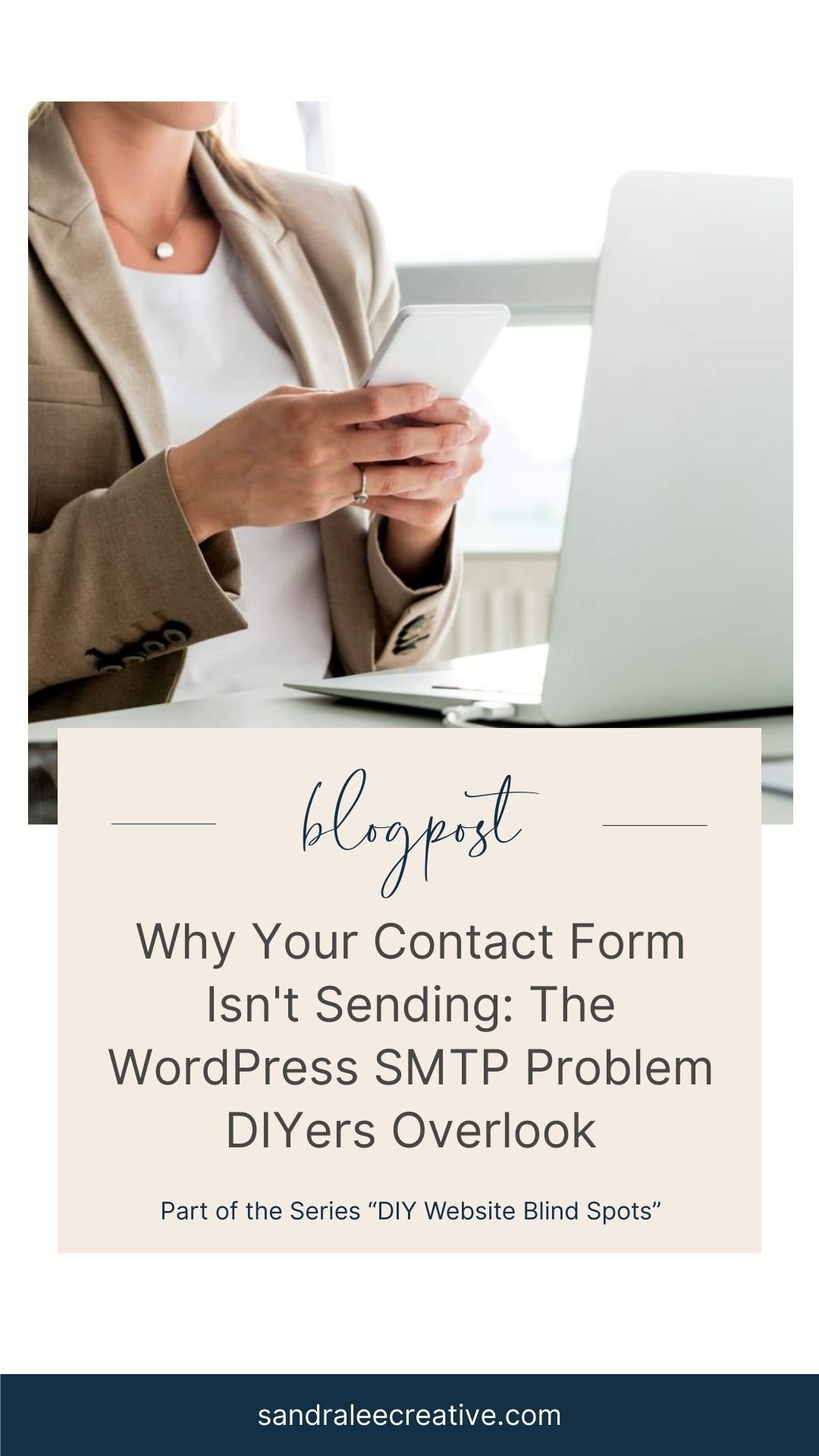This Post is Part of the Series: DIY Website Blind Spots, a series that helps uncover the small (but important) things that may be holding your website back. Whether you built it yourself or you’re the one keeping it running, these tips can help you catch problems early and fix them fast.
Why your contact form is not sending
You built a beautiful website. You added a contact form. You even tested it once… and it worked!
But then, a potential client fills it out and you never get the email. Sound familiar?
Here’s the not-so-fun truth: WordPress isn’t great at sending emails by default.
The Problem: WordPress Uses PHP Mail (and it’s not reliable)
By default, WordPress tries to send form notifications using PHP mail, which is:
- Blocked or throttled by many hosting providers.
- Flagged as spam by email services like Gmail or Outlook.
- Missing essential authentication (like SPF and DKIM records) that proves the email is legit.
So, what happens? Your form notifications never arrive and your potential leads disappear.
FluentSMTP explains this issue well: WordPress’s PHP mail is often blocked by hosts and marked as spam.
As Postmark explains in this article about Gmail and Yahoo’s email requirements, authenticated email (SPF, DKIM, and DMARC) isn’t optional anymore—it’s essential if you want your emails to land in someone’s inbox.
The Fix: Use SMTP Instead of PHP Mail
SMTP (Simple Mail Transfer Protocol) is the professional standard for sending email; it’s reliable, secure, and authenticated.
How to Fix It in 4 Easy Steps:
1. Install an SMTP Plugin: I use and recommend FluentSMTP, which works well with most providers and is super-easy to use.
2. Connect to a Trusted Email Provider: Postmark is my go-to for transactional emails like form submissions.
3. Add Your SMTP Credentials: These details authenticate your domain and ensure deliverability.
4. Send a Test Email: Don’t skip this! Always confirm things are working as expected.
Pro Tip: Use a Professional Email Address: Make sure your ‘from’ email uses your website domain when possible (example: hello@yourdomain.com). Using free addresses like Gmail or Yahoo can trigger spam filters even when SMTP is set up correctly and, honestly, from a visual standpoint, domain email adds to your credibility.
Test Regularly, Don’t Assume
Just because your form worked once doesn’t mean it always will. Test your forms regularly, and especially after hosting changes or email service provider changes.
Don’t Lose Leads Over a Silent Contact Form
You’re one step closer to a better website. This is one of several blind spots that could be silently affecting your site’s performance and usability. If you’re not sure whether your contact form is working and what else might be slipping through the cracks, or you’re overwhelmed by the technical setup, I can help you out.
Reach out to get more information and book a quick website audit to make sure everything is set up correctly and your leads are landing in your inbox (not getting lost in cyberspace).
Want to read the rest of the series? Browse all DIY Blind Spot articles here →



